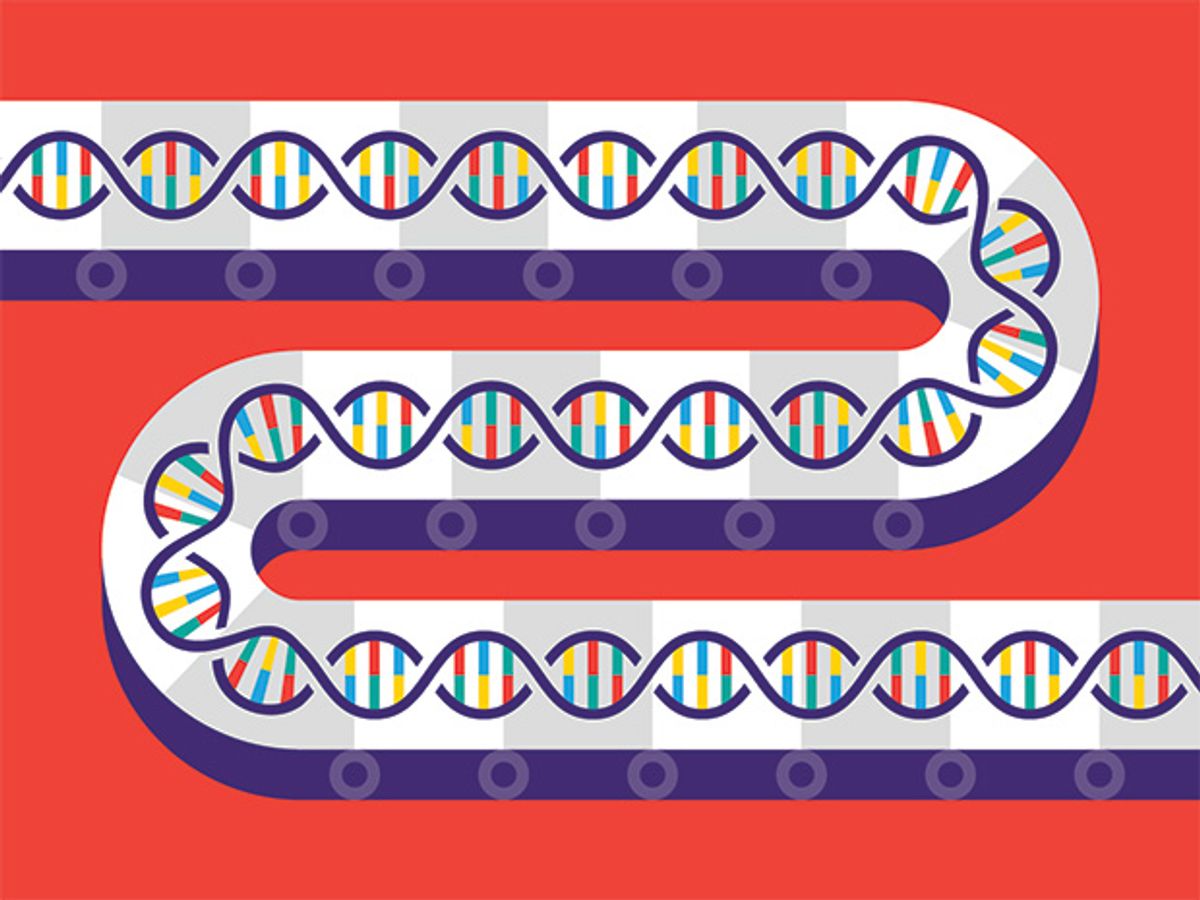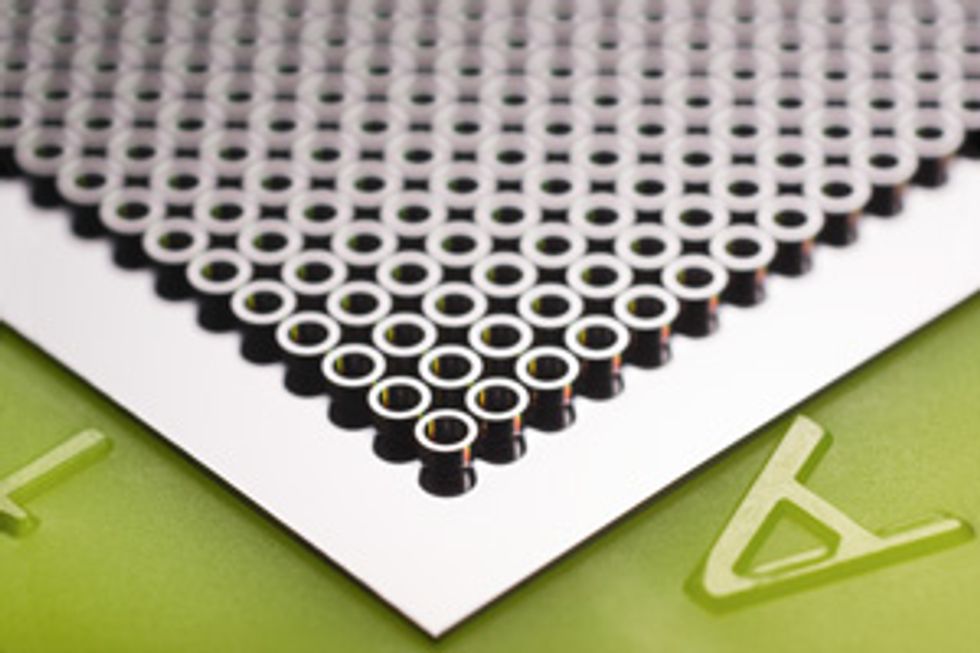DNA Manufacturing Enters the Age of Mass Production
Synthetic-biology startups adopt technologies from the computer industry

Emily Leproust, CEO and cofounder of the buzzy biotech startup Twist Bioscience, is an industrialist on the nanoscale. “I remind everyone at Twist, we are a manufacturing company,” she says. “We manufacture DNA.”
Twist is part of the young industry of synthetic biology, in which living organisms are the product and a biology lab is the factory floor. By manufacturing strands of DNA—assembling the genetic code of life from its basic components—scientists are creating organisms the likes of which the world has never seen. And these new life forms can be decidedly useful: Biologists have produced yeast cells that excrete pharmaceuticals and algae that brew jet fuel.

This burgeoning business sector has been hampered by the labor-intensive nature of DNA assembly, a painstaking process requiring trained personnel. Now, nimble startups are competing to fashion automated DNA assembly lines that would make Henry Ford proud, using techniques copied from the fabs that make computer chips. As their innovations bring down the cost of constructing DNA strands, these entrepreneurs are aiming for a low price point, which they say will cause a market boom. Twist Bioscience, which will begin commercial operations at its San Francisco headquarters in 2016, is a leading contender in that race to the bottom.
Genetic material is composed of molecules called nucleobases; the four types of bases in DNA are identified by the letters A, C, G, and T. The order of these letters serves as a code that instructs an organism how to build its cells and carry on the functions of life. In human beings, this code is about 3.2 billion letters long, while the yeast used in baking and beer brewing has a code of about 12 million letters. If you tweak the order of the letters, you tweak the organism’s instructions. Synthetic biologists have written new snippets of code and inserted them into yeast DNA, causing the microbe to churn out, for example, the omega-3 fatty acids found in fish oil supplements or the aromatic oils normally produced by roses.
Matter of Fact
Mycoplasma laboratorium: The name given to the first “synthetic organism,” a bacterium whose 1-million-base genome was assembled from scratch.
Constructing a strand of DNA isn’t complicated; in fact it’s a routine procedure performed in labs all over the world. But that procedure is typically carried out by hand, says Twist’s Leproust: “Microbiology is manual labor. You have a Ph.D. student moving liquid from one test tube to the next all day long.” So she and her cofounders invented a machine that automates the construction process.
The heart of the machine is a silicon plate pocked with 10,000 tiny wells, which are etched using the same photolithography techniques perfected by computer chip manufacturers. A different strand of DNA can be constructed in each 600-nanometerwide well. The machine does “the exact same chemistry” as a Ph.D. student would do, Leproust says, “only in a volume that’s 100 times smaller.”
Twist isn’t selling its machine but rather its DNA manufacturing services, which are aimed at researchers and startups seeking new genetic modifications that might prove useful. In 2015 the company began production runs for select customers; 2016 will see Twist’s full commercial launch. DNA assembly is priced on a cost-per-base model, and Leproust says her company’s 10-cents-per-base starting price is already the best in the industry. But she’s aiming for a 2-cent price point: “That’s the point at which researchers can significantly scale experiments and will no longer be limited by the cost of DNA,” she says. Today, customers typically order DNA strands of 300 to 1,800 bases in length, Leproust says.
1,600 Bases
Length of gene for insulin (INS)
81,000 Bases
Length of gene for breast cancer risk (BRCA1)
Another synthetic-biology startup in the San Francisco area, Zymergen, offers customers a broader set of services. The company not only constructs DNA snippets on the cheap, it also inserts that DNA into microbes and monitors the outcome. Chief science officer Zach Serber explains that the results can inform the next round of DNA design, letting customers iterate quickly as they look for their ideal organism. “You cast a wide net,” Serber says, “and when you find a variation that improves the microbe’s performance, then you double down.”
Such setups have led to excited talk of a synthetic-biology industry based on “organism fabs.” But the promise of mass-produced DNA doesn’t impress Rob Carlson, a biotech consultant and managing director of the BioEconomy Capital venture fund. “I don’t understand the business model,” he says.
Carlson is skeptical that cheap DNA assembly will lead to a proliferation of startups with ideas for profitable microbes. “So you can make and test a whole bunch more DNA—but that’s not the hard part,” he argues. “Going from test tube to bench scale to commercial scale, that’s 90 percent of cost.” For a startup to build a business around a yeast that cranks out a pharmaceutical, for example, it must manage massive tanks full of microbes. Reducing the cost of the initial DNA manufacturing would only give the company pocket money, Carlson says: “Hooray, they get to buy beer, or more pizza on Friday.”